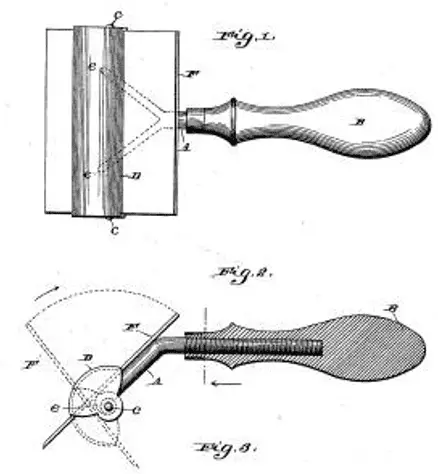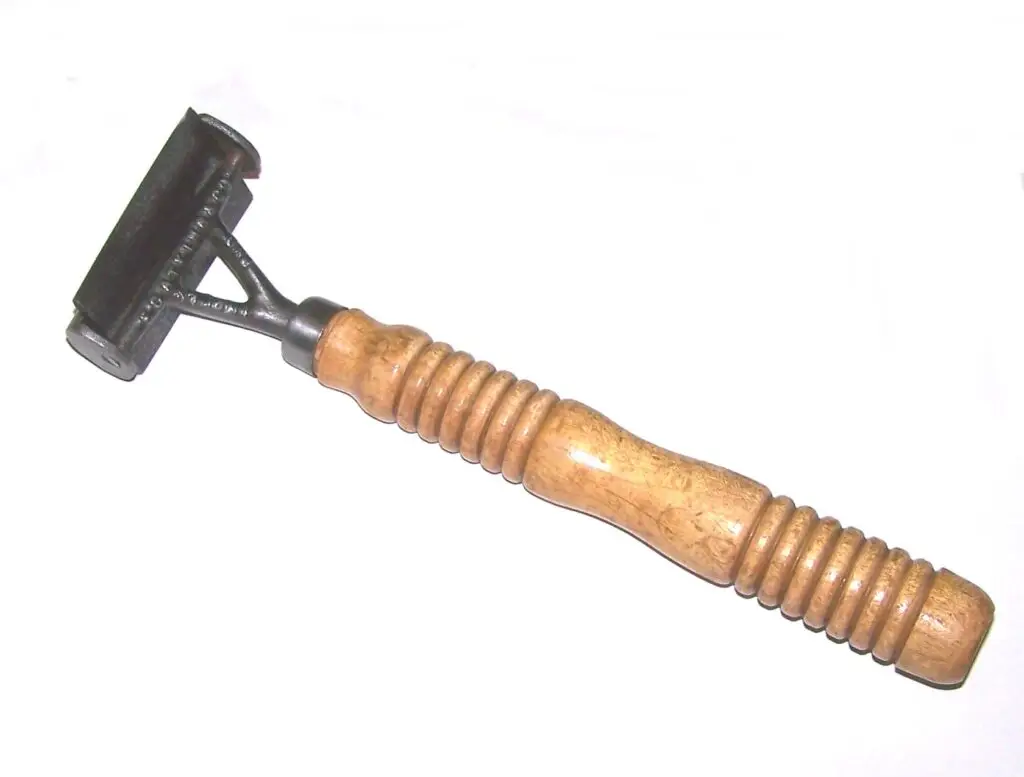E.C. Atkins were more known as a saw maker, but did have some other tools. Their floor scraper was advertised as having a patented cam blade adjustment.
E.C Atkins
E.C. Atkins & Co. was a major American saw and tool manufacturer based in Indianapolis, Indiana. Elias C. Atkins, who learned sawmaking from his uncle, started his own business in 1855 at the age of 23. The following year, he moved from Cleveland, OH, to Indianapolis and formed a partnership with W. Knippenberg. An 1858 ad shows that he had licensed and manufactured patented designs for muley saws and crosscut saws. The partnership incorporated as “E. C. Atkins & Co.” in 1885 and lasted until at least 1944.
As early as 1860, Elias C. Atkins received patents for sawblades and for machines for manufacturing saws. Overall, the company held well over 100 patents. As the company grew, it expanded its operations with divisions and sales offices in other cities, such as Chicago, IL, and Hamilton, ON. The company used various brand names, including SILVER STEEL, PEERLESS, VARIETY, STERLING, EUREKA, PERFECTION, AAA (ATKINS ALWAYS AHEAD), REX, HEMLOCK KING, VICTOR, COMMON, TYEE, HOWATSON, REDWOOD KING, CEDAR KING, DEXTER, DIAMOND, TUTTLE, AMERICAN, THE KING, FLIPPEROR, CHIEF, T.R. ROBERTS, DAMASKENED, FOUR HUNDRED, SPEED KING, JUNIOR MECHANIC, STANDARD, SUPERIOR, RELIABLE, A1, CHIEF BUCKEYE, THE WINNER, and LONE STAR.
In addition to manufacturing their own products, E.C. Atkins & Co. also acted as sales agents for other brands, some of which had been absorbed into the company but retained their own names. In 1952, Atkins was purchased by the Borg-Warner Corporation. The Indianapolis factory was closed in 1960-61, and operations were relocated to Greenville, Mississippi. In 1966, the Nicholson File Co. bought the Atkins Division of Borg-Warner and subsequently consolidated or eliminated many Atkins products, although some saws continued to be produced under the Nicholson name before production ceased.

The 1902 Patent
The diagram here shows the head of the scraper rotates to lock the scraper blade in place.
The actual scraping action pushes the working face of the scraper away from the handle. This then pushes the rotating head further around and tightening on the top half of the scraper blade. In effect it is a self tightening mechanism.
My Scraper

As can be seen, my scraper very closely resembles the one shown in a 1923 catalogue.
The difference is that the catalogue version has the company details on the adjuster, while mine has it on the cast frame.

I have found a fair number of these scrapers up for sale on the likes of eBay. But it has been hard to find any other information about them.